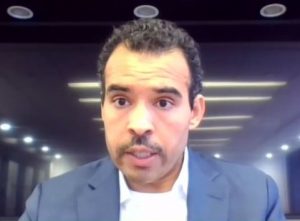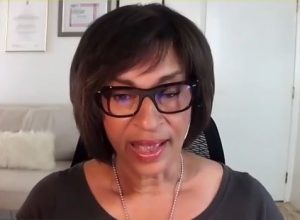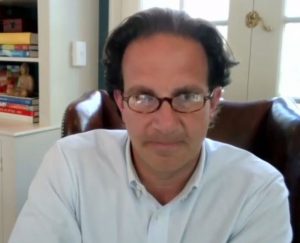At ULI Spring, CRE Leaders Chart a Course for Diversity, Equity and Inclusion
Industry leaders weigh in on why enhancing diversity and inclusion is better for business.
Diversity, equity and inclusion has become a focal point for companies, and has moved beyond meeting quotas to taking a more visible stance and weaving diversity into the corporate environment.
At the ULI Spring Meeting, commercial real estate leaders weighed in why enhancing diversity and inclusion is better for business and shared the companywide initiatives and goals they are spearheading in their organizations.
READ ALSO: New Forecasts and Considerations at 2021 ULI Spring Meeting

When it comes to DEI, simply being in compliance is inadequate, said Dr. Kira Banks, co-founder of the Institute for Healing Justice and Equity at Saint Louis University. Organizations should aim to mature in their strategies and make them actionable and more impactful.
Dr. Banks said companies that are most successful in their DEI work are the ones where the work is sustained by everyone in the organization, including leadership.
Start from the top
At Trammell Crow Co., building a more equitable and diverse workplace is a common goal across the organization. To ensure it was doing more and not simply saying all the right things, Trammell Crow instituted a steering committee than comprises 22 professionals from across the company in various levels, including three persons at the executive level.
Enhancing DEI is a continuous journey—one that involves advancing partnerships and advocacy within the community and industry. COO Adam Weers said that in 10 years, Trammell Crow has made its leadership more diverse, and it has increased funding for DEI initiatives on a large scale—across its company, community and industry.
What does that look like? Educational opportunities, supplier diversity and industry partnerships are just some of the ways the organization is stepping up.
“You can get it wrong by having too small of a group that’s not distributed enough throughout your organization, working on this part time. It will make it really hard for you to make progress.”—Adam Weers, COO, Trammell Crow Co.
Make your actions visible
Greater diversity and representation is good for business, but impact and progress are essential for organizational change. Real estate and economic development consulting firm HR&A Advisors Inc. launched employee resource groups and hired a consultant to focus its DEI efforts and to identify areas for improvement across the organization.
CEO Eric Rothman stressed the importance of creating a more equitable and diverse—gender, ethnic and racial—representation and making more opportunities available. HR&A has changed its hiring process to remove implicit bias and shifted its focus from DEI to incorporate racial justice advocacy, which Rothman said has helped the firm serve its clients better.
“We made a commitment to be an anti-racist organization, both in how we operate internally (while) also incorporating anti-racist and racial justice principles more emphatically into the work that we do.”—Eric Rothman, CEO, HR&A Advisors Inc.
Communicate goals
DEI objectives and endeavors need to be clear and consistent to foster a widespread culture of diversity in your organization. Gabrielle Bullock, principal & director of global diversity at Perkins&Will understands the significance of this. Since Bullock started advocating for diversity at the firm eight years ago, it has made meaningful progress. It abandoned the one-size-fits-all approach and shifted its recruitment and hiring practices. Core DEI values have become ingrained in company culture, and Bullock now sees engagement and essential work being done at the staff level.
Progress can’t be made without having direct, open and honest conversations about race and racism, even if it’s difficult to undertake. These conversations are always beneficial, as they clearly identify and communicate what changes need to occur to foster a diverse culture in an organization. The conversation and the education needs to be ongoing, and it’s crucial to preventing cultural erasure, said Bullock.
“It’s about not just doing good but doing right … it’s about challenging the status quo.”—Gabrielle Bullock, Principal, Director of Global Diversity, Perkins&Will.
Include and engage
Checking off a DEI box is insufficient for advancing equality and inclusion across an organization; your objectives need to be integrated across all levels and specialties. The Bozzuto Group president & CEO Toby Bozzuto said DEI goals are more likely to succeed if they are owned by everyone instead of just one person being an advocate. Bozzuto applies this philosophy across his company, where he focuses on the impact The Bozzuto Group is making.
At Bozzuto, profit is not the only driver of success; it’s also achieved through engagement and evolution. The firm aims to foster a diverse culture by hiring minority suppliers and contractors and undertaking other targeted efforts toward a more culturally diverse workplace.
“It’s important if you have the privilege to be successful—what are you going to do and how are you going to define your success and your legacy?”—Toby Bozzuto, President & CEO, The Bozzuto Group.











You must be logged in to post a comment.